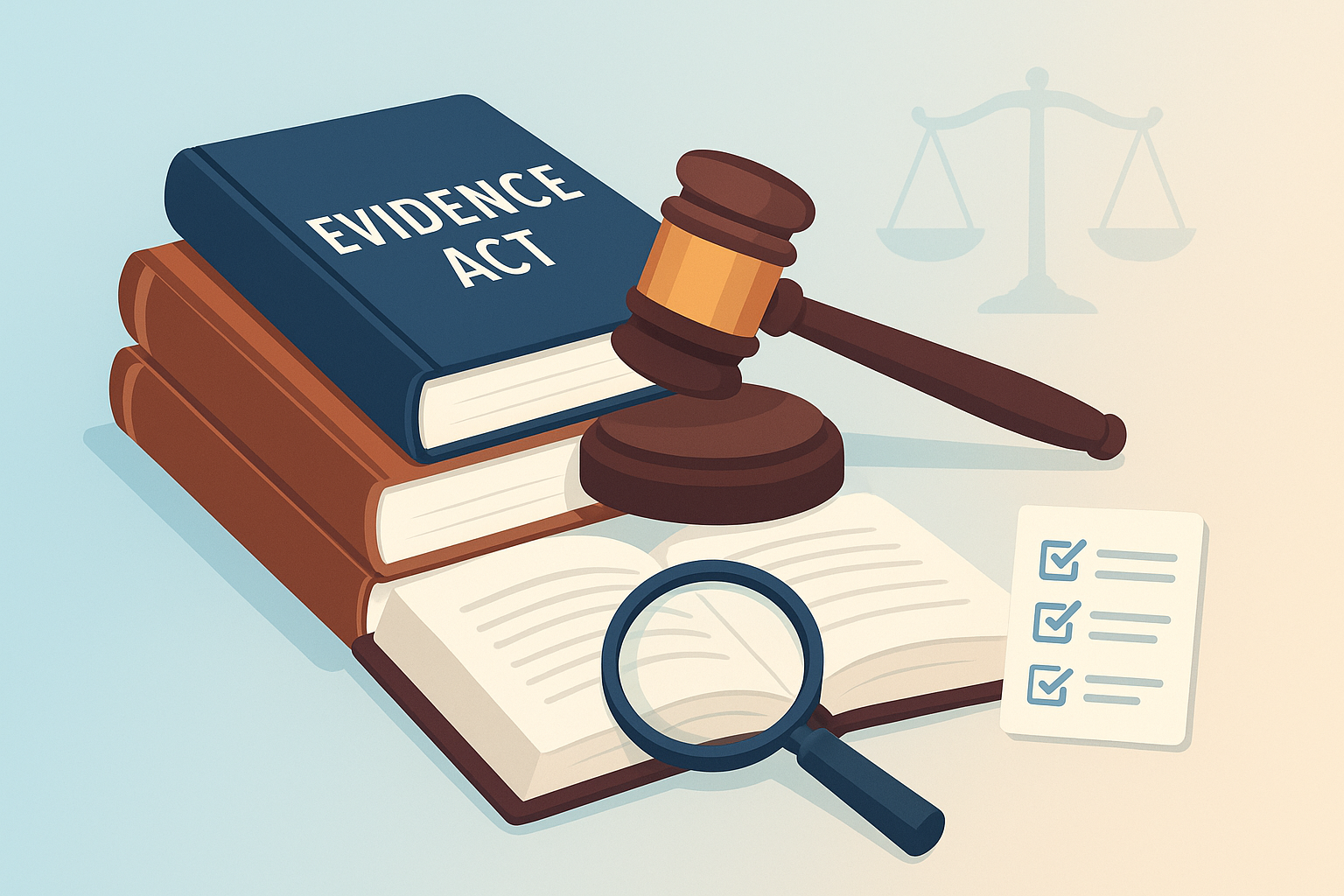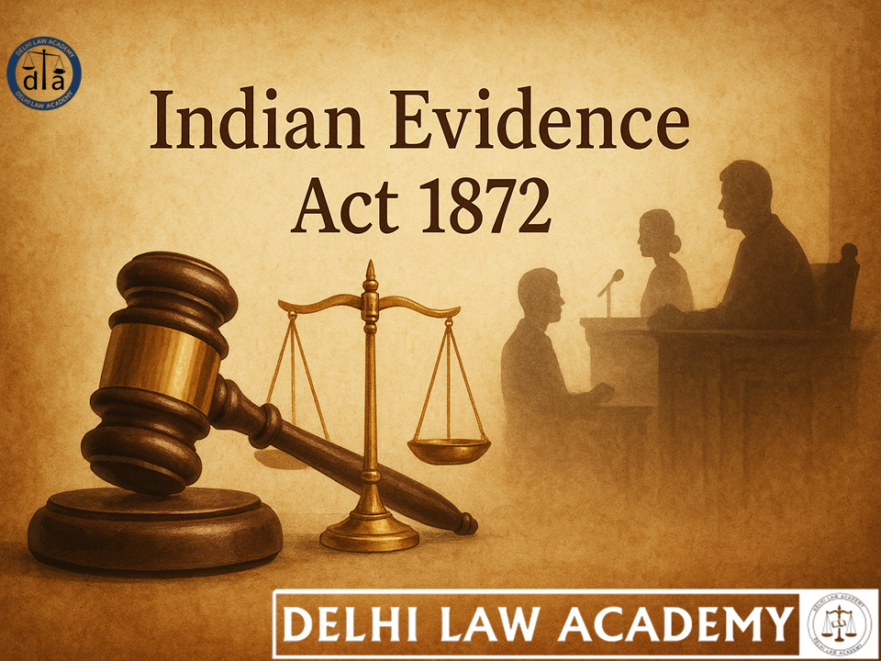
📜 The Indian Evidence Act 1872: Section 10
Things Said or Done by Conspirator
Where:
- ✅ there is reasonable ground to believe that two or more persons have conspired to commit an offence or an actionable wrong
- ✅ anything said, done or written by any one of them in reference to their common intention after such intention was first entertained by any one of them…
- ✅ is a relevant fact against each person so conspiring
- ✅ for proving existence of the conspiracy for showing that any such person was a party to it
Essential Ingredients:
- 1️⃣ There shall be a prima facie evidence affording a reasonable ground to believe that two or more persons are members of a conspiracy
- 2️⃣ If the said condition is fulfilled, anything said, done or written by any one of them in reference to their common intention will be evidence against the other
- 3️⃣ Anything said, done or written by him should have been said, done or written by him after the intention was formed by any one of them
- 4️⃣ It would also be relevant for the said purpose against another who entered the conspiracy whether it was said, done or written before he entered the conspiracy or after he left it
- 5️⃣ It can only be used against a co-conspirator and not in his favour
💼 The Theory of Agency
The principle underlining the reception of evidence of the statements, acts and writings of one co-conspirator as against the other is on the theory of agency.
Ordinarily, a person cannot be made responsible for the acts of others unless they have been instigated by him or done with his knowledge or consent.
This section provides an exception to that rule, by laying down that an overt act committed by any one of the conspirators is sufficient (on the general principles of agency) to make it the act of all.
📖 Case Study: Mirza Akbar v. Emperor [1940 PC]
Facts of the Case
Appellant Mirza Akbar was tried along with actual murderer Umar Sher and with Mst. Mehr Taja who had been wife of the murdered man Ali Askar.
The guilt of Umar Sher was not really open to doubt. He was caught running away with a single barrel shot gun in his hand, the barrel of which smelt freshly discharged.
When Mirza Akbar came up from the field in which he had been working about half a mile away from the scene of murder, he asserted that Umar Sher was innocent and should be released, but the others present refused to do so.
Umar Sher’s main defence seems to have been absence of motive. This fact however was relied upon by the prosecution as showing that he was a hired assassin, bribed to commit the murder by Mirza Akbar and Mehr Taja who were co-conspirators.
The principal evidence of conspiracy between these two prisoners consisted of three letters, two from Mehr Taja to Mirza Akbar and one from Mirza Akbar to Mehr Taja.
Exhibit P.A. (Mehr Taja’s Handwriting)
Greetings to thee O my sweet-heart. What a blissful hour it would be when with Amir Jan wailing over Ali Askar we contract our Nikah and enjoy ourselves. I do fervently cherish the hope that God will make thee mine. I have found out money for thee but thou must unhesitatingly find out the man. My heart is bursting for thee and I long for thee immensely.
Exhibit PB (Mehr Taja)
Letter to the sweet-heart. For God’s sake spare not a moment or thou wilt ever repent my loss. They are all one against me. It would be better if aught thou couldst do.
Exhibit PD (Mirza Akbar)
My sweet-heart. You must find out the money or I would die. If I had my own way I would not have left you to remain with him. To me the passing of each day is like months and years… Once place thyself in my charge and satiate me with the honey of thy red lips. Even if thou cuttest my head off my neck I would still yearn for thy white breast…. The house of the torturer will be rendered desolate. Mirza Akbar’s limbs have grown sapless after thee.
⚖️ Judgment of the Privy Council
There is no doubt whatsoever that Mirza Akbar and Mehr Taja did enter into conspiracy to murder Ali Askar and that they hired Umar Sher to commit the actual murder, which he did.
But Mirza Akbar’s contention was that this conclusion was vitiated by the admission as against him of a statement made by Mehr Taja before the Examining Magistrate after she had been arrested on the charge of conspiracy.
That statement which was made in Mirza Akbar’s absence was admitted in evidence both by the trial judge and by the Judicial Commissioner as relevant against the appellant.
In their Lordships’ judgment, the words “a common intention” signify a common intention existing at the time when the thing was said, done or written by the one of them.
Things said, done or written while the conspiracy was on foot are relevant as evidence of the common intention, once reasonable ground has been shown to believe in its existence.
But it would be a very different matter to hold that any narrative or statement or confession made to a third party after the common intention or conspiracy was no longer operating and had ceased to exist is admissible against the other party.
There is then no common intention of the conspirators to which the statement can have reference.
Distinction has been rightly drawn between communications between conspirators while the conspiracy was going on, with reference to the carrying out of the conspiracy and statements made, after arrest or after the conspiracy has ended, by way of description of events then past.
Words of Section 10 are not capable of being widely construed so as to include a statement made by one conspirator in the absence of the other with reference to past acts done in the actual course of carrying out the conspiracy, after it had been completed.
✅ What is Admissible?
Evidence of entries made by a fellow conspirator in documents actually used for carrying out the fraud is admissible against the conspirator.
❌ What is Not Admissible?
A document not created in the course of carrying out the transaction, but made by one of the conspirators after the fraud was completed, is inadmissible against the other. While it may evidence past actions or intent, it does not relate to the ongoing conspiracy.
🔹 The Rule of Common Responsibility
Ordinarily, especially in a criminal case, one person cannot be made responsible for the acts or statements of another. Only when there is evidence of a concerted action in furtherance of a common intention to commit a crime, can everyone involved be treated as acting on behalf of the rest, following the principle of agency.
📚 Continue Your Evidence Act Preparation
Don’t stop here! Strengthen your knowledge of the Evidence Act with our other fully solved tests:
📘 Free Study Material for Judiciary Aspirants!
Download our FREE study material prepared by Delhi Law Academy’s expert faculty.
- Prima facie evidence that two or more persons are members of a conspiracy
- Acts or statements are made after the common intention is formed
- Acts are relevant against other co-conspirators
- Can be used regardless of whether another co-conspirator joined later or left earlier
Not admissible: Documents or statements created after the conspiracy is complete or outside the scope of carrying it out, even if they show past intent.
Contact us
📍 Delhi Law Academy – Jaipur Branch
6C, Tower 2, Coaching Hub, Pratap Nagar, Jaipur – 302033
📞 Phone:
+91 9911916552
+91 8447285606
✉️ Email:
contactus@delhilawacademy.com

